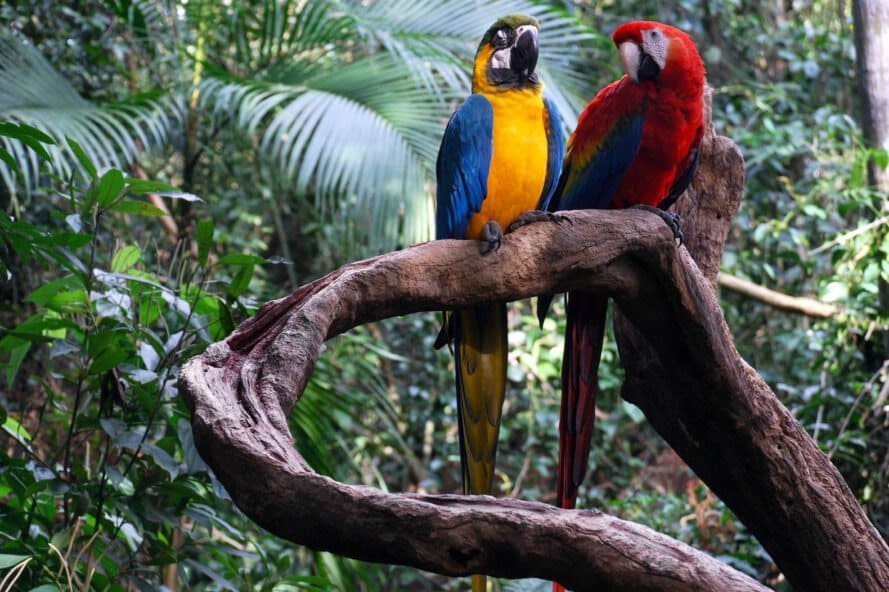As one of the most biologically diverse countries on Earth, Brazil is taking steps to consolidate all of the nation’s biodiversity data and information into one place to support scientific research, as well as decision-making and creation of eco-friendly public policy. In an effort to achieve those goals, the Ministry of Science, Technology, Innovations and Communications (MCTIC) has created the Brazilian Biodiversity Information System (SiBBr), which is an online platform that gives free access to a collection of the largest amount of data and information on biodiversity in the South American nation.
What is Megadiversity?
In 1998, Conservation International made a list of 18 megadiverse countries, which meant that those nations harbored the majority of Earth’s species, as well as a large number of endemic species. The term megadiversity defines an area that features a significant amount of biodiversity.
According to the UN’s Environment Program, Brazil is at the top of their list of the 18 most megadiverse countries in the world. With more than 120,000 species of invertebrates, 9,000 vertebrates and 4,000 plant species, Brazil hosts nearly 20 percent of Earth’s biological diversity.
These natural assets can be a significant factor in Brazil’s future economic growth, but to avoid losing their biodiversity, the country wants to monitor conservation efforts and make sure their natural resources are sustainably used.
On average, “700 new animal species are discovered every year in Brazil,” says UN Environment. Considering how large Brazil is— as well as the numerous institutions researching the country’s biodiversity— putting all of that information in one easily-accessible place is a formidable challenge.
“When the information is spread around different institutions, one is less able to find it, judge the quality of the data and understand how it can be used. Besides, the time needed to compile the data can make its use inefficient, as is the case in public policies,” explains Andrea Nunes, general coordinator of biomes of the Brazilian Ministry of Science, Technology, Innovations and Communications, and national director of the Brazilian Biodiversity Information System project.
To illustrate her point, Nunes talked about Brazil’s special map that highlights the areas of the country that are a top priority for conservation and sustainable use. The map is a tool for public policy decision-making that takes two years to develop and is updated every four to five years.
Nunes says that in terms of “territory dynamics and land use changes,” five years is a long time. However, SiBBr can change all of that.
How SiBBr works
Currently, the SiBBr gathers information and data from 230 Brazilian institutions, like state agencies, research centers, museums, and zoos. It has more than 15 million records about different species in the country published by those institutions.
Researchers can use the database to find information on different species, as well as share their findings. Farmers can use the platform to calculate environmental compensation credits and get information about endangered animals and plants. There is also a way for Brazilian citizens to contribute their own information, like pictures and documentation on biodiversity in their area.
There is also a tool called Biodiversity and Nutrition, which is a nutritional database of native Brazilian species.
But, they aren’t just keeping all of this information to themselves. The SiBBr is also part of the Global Biodiversity Information Platform, which is “an international network and research infrastructure” that provides free biodiversity data from hundreds of institutions across the globe.
This is the largest global initiative aiming to give people virtual access to free biological information, and it currently spans 60 countries and has more than 570 million species records.
Conservation and sustainability is a top priority, and knowing Brazil’s biodiversity is key to achieving those goals. With SiBBr, anyone from government organizations to students and educators can access this vital information.
According to their website, SiBBr is an accessible platform filled with tools to help with the “organization, publication, and consultation” of:
- Occurrences of species
- A catalog of species
- Ecological data
- Biodiversity projects
- The use of biodiversity
- Registration of the country’s biological collections
The database continues to grow, and in the coming months SiBBr will switch to a new platform to make using the data even easier.
BaMBa
Connected to SiBBr is BaMBa, the Brazilian Marine Biodiversity database, which has the same goal for collecting data about the country’s marine life as SiBBr does for species on land. The information comes from sources like integrated, holistic studies and fish surveys which can be used for governmental policies related to the use and management of marine resources.
Via U.N. Environment, SiBBr












